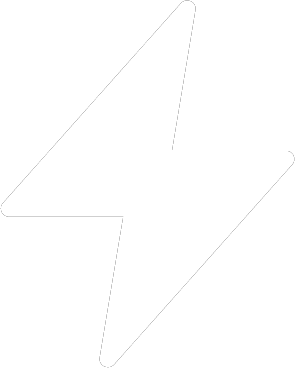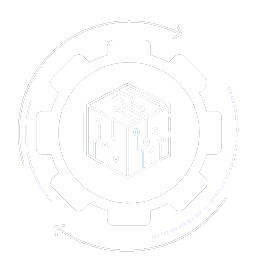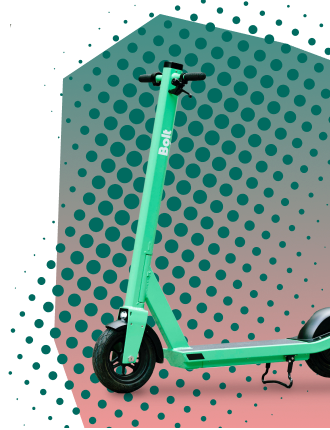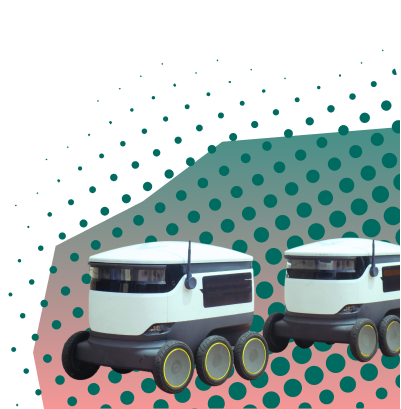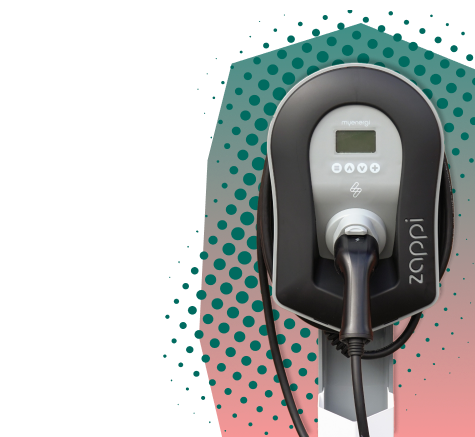Are you looking to hire a Chief Technology Officer to head up your software engineering team, or looking to make your mark as the Chief Technology Officer in a leading Clean Energy, Infrastructure or Mobility team? Storm4 are on a mission to connect leading Chief Technology Officers who strive to execute industry-leading technology operations with the world’s emerging and global Clean Energy, Infrastructure & Mobility companies.
These professionals hold a wealth of experience, holding an instrumental role in driving business excellence through world-class technology intelligence.
Working with the CEO and Board members, the Chief Technology Officer is an executive first and a technologist second, looking at the short-term and long-term needs of an organization to make healthy investments that will help a business achieve its objectives. They are responsible for outlining the company’s technological vision, implementing technology strategies, and ensuring that the technological resources are aligned with the company’s business needs.
What Is A Chief Technology Officer (CTO)?
The Chief Technology Officer (CTO) is the visionary behind a company’s tech strategy and direction. Across the three core CleanTech sectors (Energy, Infrastructure & eMobility), this role is not just about overseeing IT systems; it’s about building scalable, sustainable, and forward-thinking technology strategies that enable innovation and growth.
Working alongside the CEO and executive leadership, the CTO translates a company’s mission into a robust technology strategy that supports long-term business goals, making the final call on everything from software architecture, hardware integration, and product innovation, to data strategy, AI adoption, and cybersecurity.
In the Clean Technology space, a CTO plays a crucial role in driving decarbonization technologies, energy management systems, eMobility platforms, and IoT integration, ensuring that every innovation aligns with environmental and commercial outcomes.
A successful CTO balances strategic leadership with deep technical fluency, ensuring that technology investments are sustainable, efficient, and future-proof.
Key CTO Responsibilities Include:
- Directs the strategy for technology platforms, partnerships and external relationships
- Plans and implements timelines for the development and deployment of all technological services
- Develops, tracks and manages technology performance metrics and oversees the annual operating and capital budgets for purchasing, staffing and operations
- Identifies, compares and implements technology solutions to meet current and future needs
- Collaborates with Marketing, Business Development and Operations to define and deliver new products and enhancements and use new technologies to streamline company policies and rules
- Promotes overall technology standards and processes to ensure best practice

CTO Skills Requirements
In order to be an effective CTO and be the figurehead for all things tech within an organization, you need to possess a blend of the strategic skills expected of a C-Suite leader, and the hands-on technical expertise of an experienced software engineer.
Technical Skills
- Strong knowledge of software engineering principles, cloud infrastructure, and data architecture.
- Proficiency in modern tech stacks (Python, JavaScript/TypeScript, Go, etc.).
- Understanding of AI/ML integration, IoT systems, and data-driven product design.
- Experience with cybersecurity frameworks, DevOps, and scalable infrastructure management.
- Familiarity with sector relevant CleanTech technologies such as smart grids, energy storage systems, or electric mobility platforms.
Leadership & Strategic Skills
- Visionary thinking and the ability to translate technical potential into business growth.
- Excellent communication and stakeholder management skills.
- Proven ability to lead cross-functional teams and mentor technical talent.
- Strong financial and commercial acumen, comfortable with P&L ownership for tech departments.
- Agile and adaptive mindset, capable of thriving in fast-changing markets.
CTO Experience Requirements
CleanTech organizations typically seek CTO candidates with:
- 10+ years in technology and engineering leadership, with at least 5 years in senior management.
- A proven track record of scaling technology teams and products in high-growth or startup environments.
- Experience within, CleanTech, EnergyTech, or SaaS sectors is highly valued.
- Demonstrated experience in fundraising support, product commercialization, or digital transformation initiatives.
- A relevant degree in Computer Science, Engineering, or a related technical discipline (MBA or executive training preferred).
The Chief Technology Officer is one of the most senior executive positions within an organization; part of the C-suite and a direct advisor to the CEO and Board. As both a strategic leader and a technical authority, the CTO must possess a deep understanding of how technology drives business performance, product innovation, and long-term scalability.
This role demands decades of experience, proven success in building and scaling technology teams, and the ability to navigate the intersection of technical decision-making and commercial strategy.
CTO Salary Expectations
As a C-Suite leader, Chief Technology Officers are among the highest paid professionals in any organization; with compensation packages often including a base salary, performance bonuses, and equity options due to the strategic influence of the role.
While salary levels for CTOs in the Clean Energy, Infrastructure or eMobility spaces can vary depending on company size, funding stage, and geographic location the average CTO can expect to receive an annual salary somewhere in the range of $230,000 – $330,000.
If you want to find out the breakdown of CTO salary expectations by sector and location, download our latest US CleanTech Salary Guides for a more in-depth look at salaries.
CTO Organization Hierarchy
The CTO is the highest tech focused position in an organization, effectively overseeing all technology and software teams within a company, and reporting only to the CEO & Board of a company.
The CTO works cross-functionally with Product, Operations, Finance, and Marketing, ensuring that technology supports all business functions.
CTO Reports To:
- Chief Executive Officer (CEO)
CTO Direct Reports:
- VP of Engineering / Head of Engineering
- Head of Product
- Head of Data / Analytics
- IT & Infrastructure Leads
- Security Lead / CISO (in larger firms)
Example CTO Job Description
When hiring a Chief Technology Officer, the job description should clearly communicate both the strategic influence and the technical leadership expected of the role. A strong job ad highlights the company’s mission, its stage of growth, and the scope of responsibility the CTO will hold – from shaping the technology vision to leading teams and delivering innovation.
Below is an example of how a compelling CTO job description for an EV Charging organization might look:
⚡ Role: Chief Technology Officer
💼 Industry: CleanTech | Electric Vehicle Charging
🌎 Location: Los Angeles, CA or Remote
💰 Salary: Competitive base salary based on experience, starting at $150,000 + Highly Competitive share options
This major CleanTech Charging company is looking for their next CTO. You will be a key leader and mentor for engineers as you tackle climate change. This company focuses on developing and deploying Electric Vehicle Charging solutions for leading global automotive OEMs. Come join a growing team of world-class engineers and help build the next generation of turnkey charging systems.
Founded in 2016, this company is currently finalising Series A funding. They continue to innovate, with 2023 set to bring the launch of a fully autonomous, robotic, and mobile charging system for Electric Vehicles.
Responsibilities:
- Lead, manage and grow a team of multi-disciplined engineers
- Work with senior leadership to continue developing the engineering department
- Serve as a technical guide and provide strategy for development and design of all systems
- Establish and build strong team culture
- Collaborate with senior leadership team to develop technical, financial, and business strategy
Requirements:
- 8-10 years of prior experience in a related role
- Scaled and led large teams, with empathy and soft skills
- Skilled technical communicator – able to explain your ideas and engage with cross-company teams and stakeholders
- Demonstrated experience working with both hardware and software teams
Why Apply?
- Full health benefits, including dental and vision, 401k, share options, bonuses
- Join an industry-leading team of passionate engineers
- A company with long term outlook – come grow and develop professionally
- Lead your colleagues to solving this generation’s biggest questions
- The Climate Crisis is real – come be a part of the solution
📧 Sounds like you? Please click on the ‘Apply’ button. You can also send your resume directly to recruiter@cleantech-org.com
CTO Hiring Process
The hiring process for a CTO is typically structured in multiple stages to evaluate both technical expertise and executive leadership qualities:
- Initial Consultation: Alignment between CEO/Board and your hiring team or CleanTech recruitment partner to build a profile of your ideal CTO.
- Profile Sourcing: Identifying candidates with the right background, experience and skillsets for your organization.
- Preliminary Screening: Review of technical background, leadership experience, and cultural fit.
- Panel Interviews: Combination of technical deep dives, strategic discussions, and scenario-based assessments.
- Executive Interviews: Final evaluation with CEO and/or Board members focused on long-term vision and leadership style.
- Offer & Negotiation: Offering the position and agreeing a compensation package including salary, bonus, and any equity considerations.
CTO Interview Questions
Interviewing for a Chief Technology Officer requires a balance between assessing technical mastery, strategic vision, and leadership style – to understand the candidate’s ability to build and scale technology, and how they can align innovation with business outcomes and team culture.
Below are sample questions designed to help hiring teams to evaluate a CTO’s technical depth, strategic mindset, and fit within your organization:
Technical & Strategic Questions
- What emerging technologies do you believe will have the biggest impact on the Clean Energy/ Infrastructure/ eMobility sector over the next five years, and how would you position our business to leverage them?
- Can you walk us through your approach to developing a long-term technology roadmap that aligns with commercial objectives?
- How do you evaluate when to build technology in-house versus partner with or acquire external solutions?
- Describe a time when you had to make a difficult trade-off between innovation speed and product stability – what guided your decision?
Industry-Specific Questions
- How do you see technology enabling decarbonization and sustainability goals across the CleanTech ecosystem?
- What are the biggest technical barriers currently facing renewable energy or eMobility innovation, and how would you address them?
- How do you balance compliance with environmental and data regulations (such as ESG reporting or energy standards) while maintaining agility?
- Can you share an example of a technology solution you’ve led that had a measurable sustainability or energy efficiency impact?
Leadership & Culture Questions
- How do you foster collaboration between technical and non-technical teams to ensure alignment on priorities?
- Tell us about your leadership philosophy – how do you build trust and motivate high-performing engineering teams?
- What strategies do you use to attract and retain top technical talent in a competitive market?
- How do you ensure diversity of thought and inclusion within your technology organization?
Experience & Background Questions
- What has been the most challenging technology transformation you’ve led, and what were the key lessons learned?
- Describe your experience working with investors or boards – how do you communicate complex technical concepts to non-technical stakeholders?
- How have you structured and scaled your technology teams in past roles to support rapid business growth?
- What motivated your move into the CleanTech or sustainability space, and how does it shape your leadership today?
